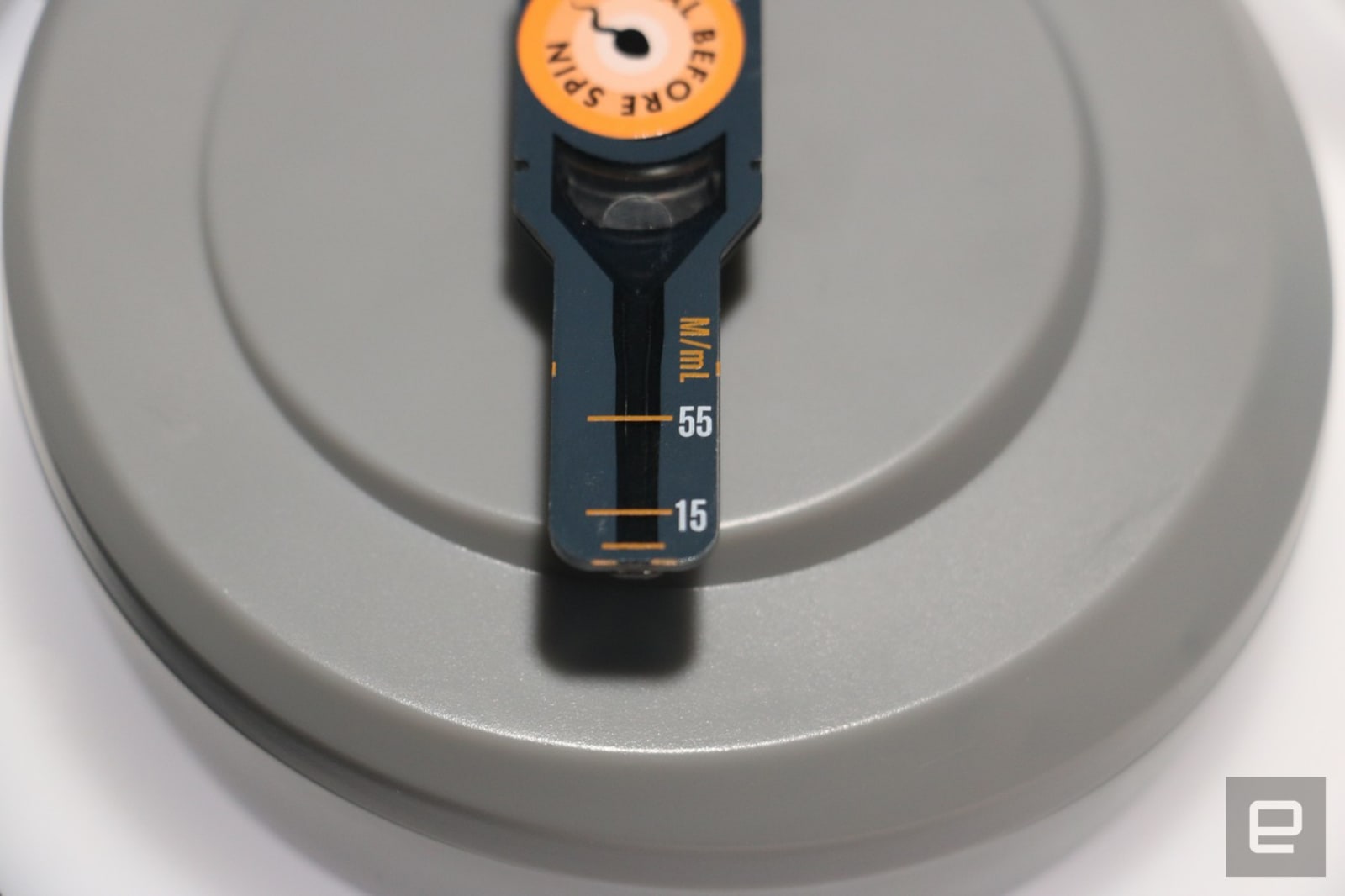To be clear, Trak isn’t meant to replace a visit to the fertility clinic or a talk with your doctor. But it offers some advantages in addition to the obvious benefits of convenience, comfort and privacy. These include time saved trying to pinpoint the cause of reproductive troubles, and the ability to monitor and learn how to improve your sperm count.
Dr. Jamin Brahmbhatt, co-director of the Pur Clinic, specializes in male fertility and has been speaking with reporters on behalf of Trak’s makers, Sandstone Diagnostics, to explain the device’s benefits. He told Engadget that with every patient, one of the first things he checks is sperm count. If a patient has already tested his own levels and can eliminate that as the cause, it can cut up to three months from the process of figuring out what is causing a couple’s reproductive woes, said Dr. Brahmbhatt.
That advantage isn’t unique to Trak — you can already study your sperm count at home with other devices. Yo Sperm Test, a microscope attachment for smartphones that was launched earlier this month, also lets men monitor their sperm at home, but studies motility instead of count. Yo uses your phone’s camera to take a video clip and then applies an algorithm to the footage to analyze the sperm. That, to me, seems like a less accurate method compared with Trak’s centrifugal separation technique, which is unique for the consumer space. Plus, as Dr. Brahmbhatt so aptly put it, “You don’t want your phone touching sperm.”
“You don’t want your phone touching sperm.”
To be fair, when used correctly, Yo does not actually result in your phone making contact with semen, but it does put the device’s camera in very close proximity to the sample. Trak is a separate apparatus altogether, keeping the sperm as safe a distance away from your phone as you’d like.
Another reason Trak stands out is the way it displays your results. Instead of showing a binary output, like “Good” or “Bad,” this system is, according to the company, the first FDA-cleared device that will classify sperm counts as Low, Moderate or Optimal. Scores are represented like thermometer readings: Your rating is the corresponding mark where your fluid reaches. Those ranges are based on World Health Organization guidelines and some clinical studies.

Before we get too far ahead of ourselves, here’s how Trak works. The kit consists of a small centrifuge and four testing sets, each including a collection cup, a dropper, a stick that the company calls a prop, and two seals. As you would before going to visit a fertility doctor, you have to abstain from ejaculating for two days before checking your sperm. When you’re ready, deposit your semen into one of the provided cups, swirl the sample around a little, then let it sit at room temperature for about 30 minutes. This lets the sample completely liquefy. Once the time is up, swirl the cup again, then place a single drop of semen in the hole in the center of the prop, and stick the seal over the opening. Then place the prop on the centrifuge, making sure it’s securely attached, and close the lid. If the prop is properly connected, the centrifuge will automatically start spinning.
You’ll have to wait six minutes for the device to stop, at which point you’ll see your results at the bottom of the prop. As I mentioned before, you’ll get a result of Low, Moderate or Optimal, and you’ll have to log these into the companion app manually. But here’s where Trak’s biggest benefit lies.
When you first set up the app, you’ll have to answer a series of questions about your lifestyle. These concern factors that influence sperm production, including diet, exercise, sleep and use of toxic substances like tobacco or marijuana. The app analyzes your answers and gives you a score, and you can do this without entering in your sperm test result at all. But once you do, you can use the information in the app to see what you should actually be doing to improve your results.
That education is what Dr. Brahmbhatt called Trak’s strength. “It makes a doctor’s job easier,” he said. Of course, apps that teach you how to improve sperm production aren’t new, either. But it’s the combination of Trak’s app and its centrifuge that makes its system unique.
Trak also has the fringe benefit of providing an accurate biological understanding of a man’s health. “Low sperm count is related to other issues,” said Dr. Brahmbhatt. With repeated testing, you can actually see real indicators of whether the changes to your lifestyle are making any improvements to your health. Given how expensive the props are, you’re not likely to rely on this as a way to track your well-being, but it’s a nice extra.
It’s easy to dismiss a device like Trak as ludicrous or unnecessary, but it has real benefits for people troubled by fertility problems that we should not ignore. Although I haven’t tested it and can’t verify whether it’s truly accurate, Trak’s differences from existing at-home sperm trackers and its apparent benefits make it a potentially helpful tool for reproductively challenged couples and individuals.
(49)



